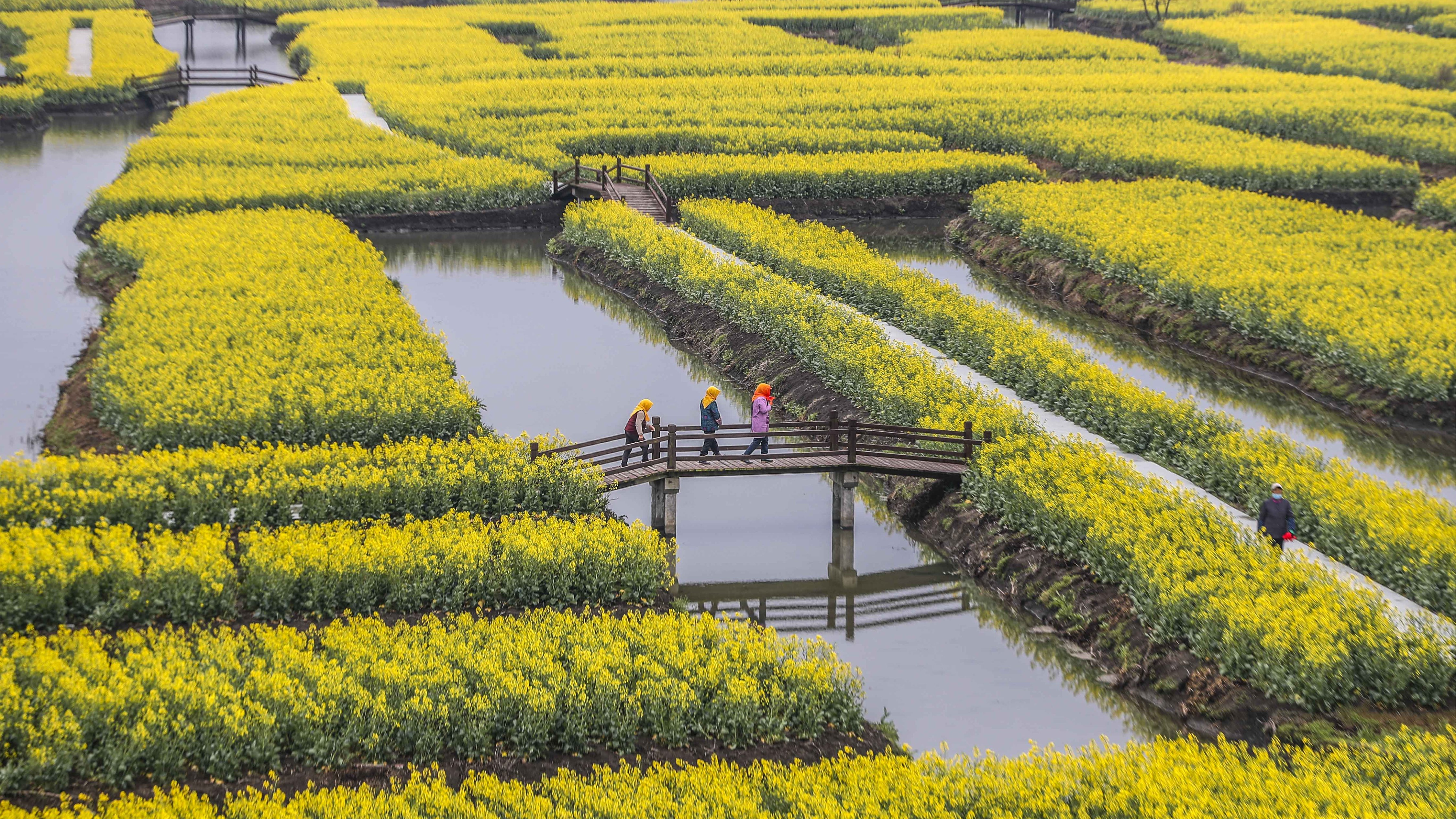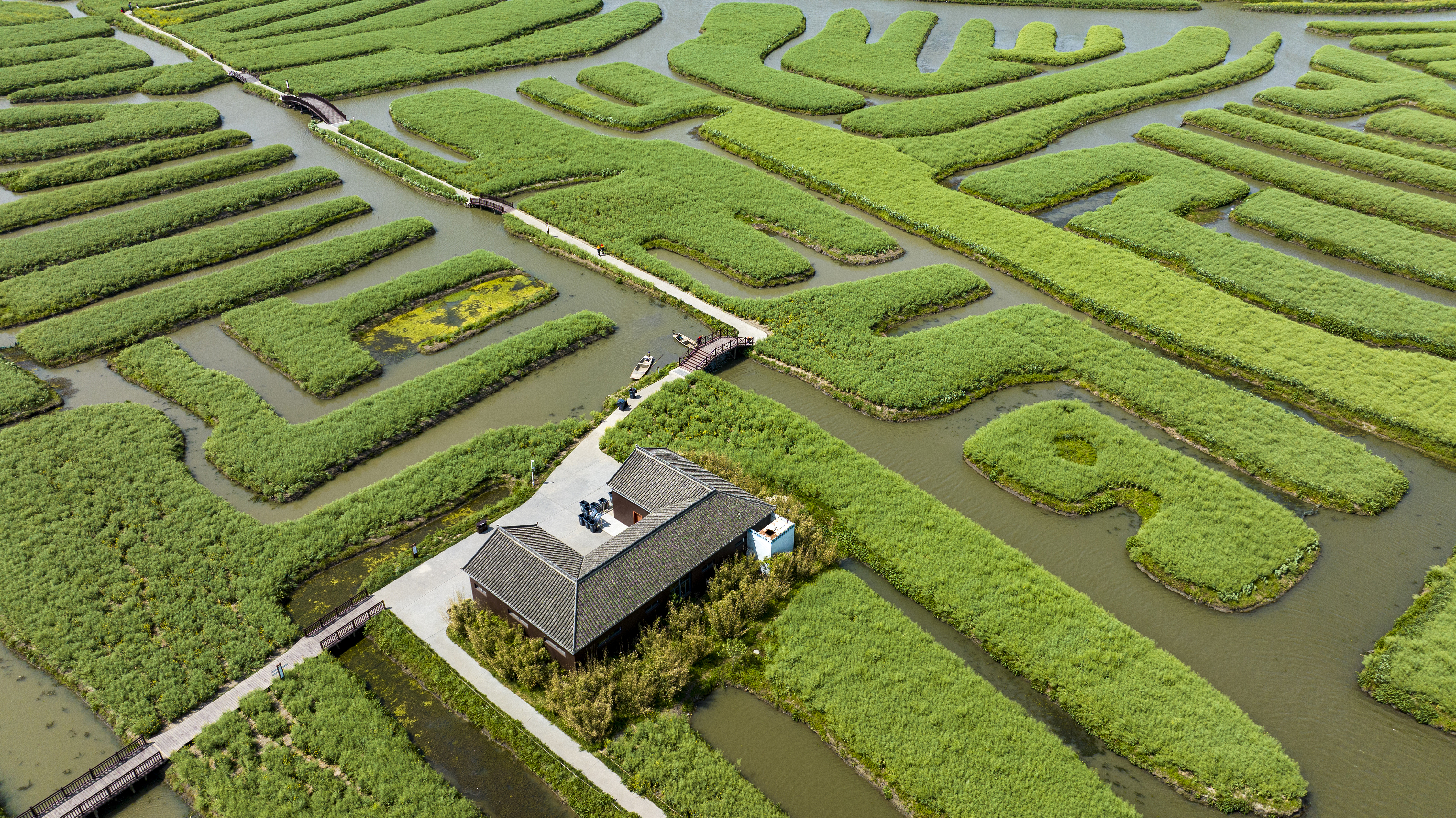
View of rapeseed flower field in Xinghua, Taizhou, east China's Jiangsu Province, March 18, 2022. /CFP
View of rapeseed flower field in Xinghua, Taizhou, east China's Jiangsu Province, March 18, 2022. /CFP
Rapeseed flower fields have long been a well-known tourist attraction in the city of Xinghua, east China's Jiangsu Province. Unlike other places, however, the rapeseed plants in Xinghua grow in 'Duotian,' a field of island-like structures that scatter across shallow lakes.
The unique landscape has a history of more than 600 years. Known as Xinghua Duotian Irrigation and Drainage System nowadays, it remains a contributor to local flood control, drought prevention, ecological agriculture and tourism.
Last October, the system received a World Heritage Irrigation Structures (WHIS) designation, which aims to protect and promote irrigation projects of historical and scientific value.
A total of 30 heritage irrigation projects in China have been included in the WHIS list, providing examples for scientific and technological exchanges on irrigation, drainage and flood control. Understanding the history, science and management experience of ancient irrigation works will help China's efforts to advance rural revitalization, ecological protection and sustainable water management.

View of Xinghua Duotian system in Taizhou, east China's Jiangsu Province, April 21, 2023. /CFP
View of Xinghua Duotian system in Taizhou, east China's Jiangsu Province, April 21, 2023. /CFP
Located in central Jiangsu, Xinghua stands on a plain that developed from the accumulation of river sediments. But due to its bowl-shaped terrain, the plain was plagued by floods since the Ming Dynasty around the 15th century, destroying local agriculture and ecological environment. The countless uplands were built to cope with floods and droughts, and have been maintained and handed down for generations.
From wheat, rice and rapeseed to fish, shrimp and crab, Xinghua is home to a diversity of high-quality agricultural produce. The city was designated as a national ecological demonstration zone in 2001, and its development has since focused on ecological agriculture.
Covering an area of over 52 square kilometers, the Duotian system is regarded as a valuable specimen to study the changes of local ecological environment and traditional farming techniques.
The system is a composite of agriculture, forestry and fishery, which has important value in local agricultural production and sustainable development, inheritance of farming culture, and protection of rural ecological environment, according to Professor Lu Yong with Nanjing Agricultural University, who is also the deputy director of Key Laboratory of Traditional Agricultural Heritage, Ministry of Agriculture and Rural Affairs.
In addition to its bounty of agricultural produce, the farming system has also profoundly influenced the local folk art and customs, featuring in local people's music, painting and literature.
Xinghua is the birthplace of several famous literati, such as writer Shi Nai'an and calligrapher and painter Zheng Banqiao. Shi is the author of Outlaws of the Marsh, one of the four most well-known ancient novels in China. Expressions of the Xinghua dialect have been found in the novel. Zheng's calligraphy style was inspired by the structure of the Duotian system in his hometown.
In recent years, a series of cultural activities have been held in Xinghua, displaying the vitality of the deep integration of culture and tourism. The Duotian system has been introduced in TV programs, films, and even singing, dancing and photography competitions.